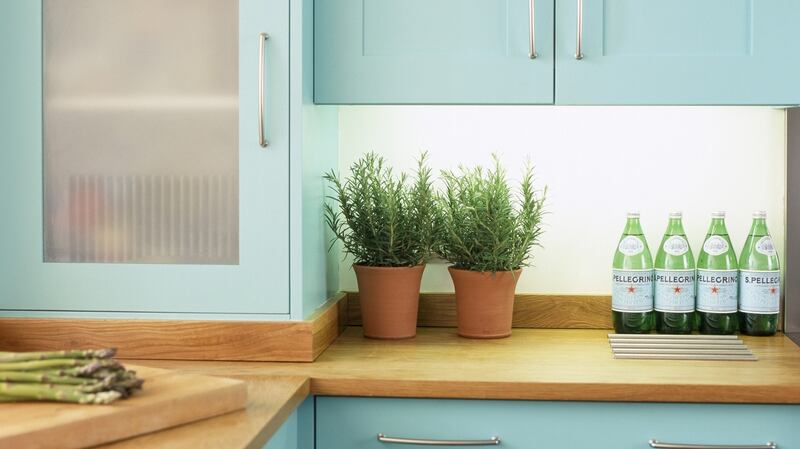Typically, the kitchen is the single most expensive room to refurbish, but it is possible to pull off a makeover by getting the kitchen cabinets resprayed and updating the handles.
According to Maurice Killeen of Dublin company Bespoke Kitchen Respray, all wood cabinets can be resprayed and where there's gloss or vinyl finish to the units, the veneer can be stripped back so the paint can get a grip. "The wood underneath these facades is normally good MDF, which is the perfect material to respray as it's so smooth," says Kileen.
You can start by emailing a photo of your kitchen to get an estimate but an assessment visit (they’re generally free) is highly recommended. How much labour is required can vary hugely, as there may be lots of filling and prep required. If veneers need to be stripped, that adds to labour costs too.

The initial visit will also ascertain what elements of the kitchen can be taken away and sprayed off-site. Normally, doors, kickboards and any other removable parts are taken away to a studio to be filled and finished. Gable ends, block pelmets, canopy hoods and fixed mouldings need to be sprayed in situ.
Colour choice
"We can literally colour match any shade a customer wants. Mostly we are asked to replicate colours from Farrow and Ball, Little Green and Colourtrend as well as from bigger brands like Dulux and Crown. When the customer picks their shade, we mock up a sample door in the chosen colour and finish, and I leave it with them for a few days to make sure they are 100 per cent happy," says Killeen.
There are three standard finishes – matte, satin or gloss – to choose from and, as a rule of thumb, matte looks best on flat contemporary doors, whereas doors with lots of woodwork detail look better in satin. Gloss has been out of vogue for the past while, but if the recent interior trend shows in Paris and London are anything to go by, gloss is on the cusp of a comeback.
It all comes down to personal choice and the matte/satin/gloss decision makes little or no difference to the durability of the paint as they are all mixed with two-pack polyurethane, to make for a very durable, heat-resistant, lacquered coating.
The process
Work begins early in the day and all removable doors are unscrewed and surfaces prepped. The next stage, masking off, actually is the most time-intensive part and can take up to four hours just to cover all exposed parts of the kitchen with protective plastic. Once ready, it takes a few hours to spray up to four coats of poly paint and primer, depending on how much the surface needs, and drying time is a mere 10 minutes between coats.
Removed doors are typically returned and rehung a few days later and Killen's firm will fill and sand flush any screw holes left by previous knobs and handles, so you can fix new hardware without any tell-tale signs. For new handles and knobs, websites like Hafele.ie and Amazon. com have an immense selection from as a little as a few euro per piece.
Spray vs hand paint
The main advantage of a spray finish over hand painting a kitchen is the polyurethane mix which makes the product much more resilient and long-wearing. The finish is also more flawless and factory-like, but some prefer the more rugged look of a hand-painted kitchen. Lastly, the process is much quicker as hand-painted layers and primer can take days to dry fully between coats. Cost wise, when you factor in the cost for paint and a painter, the outlay for both is similar.
Costs
Killeen estimates the average kitchen in a semi-detached three-bed will range from €700-€1,500 to respray, including all paint, surface preparation and finishes.










